
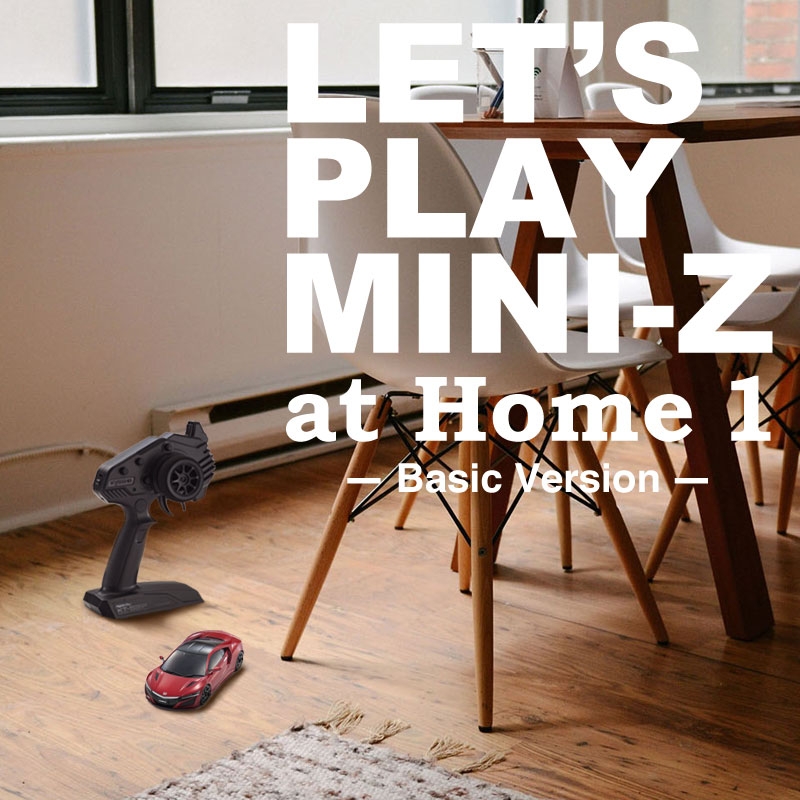
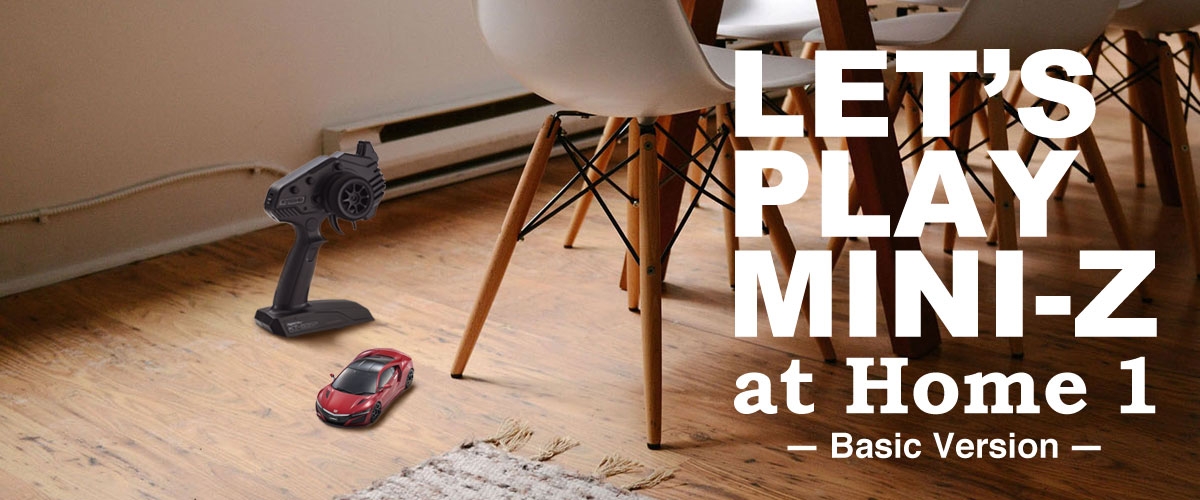
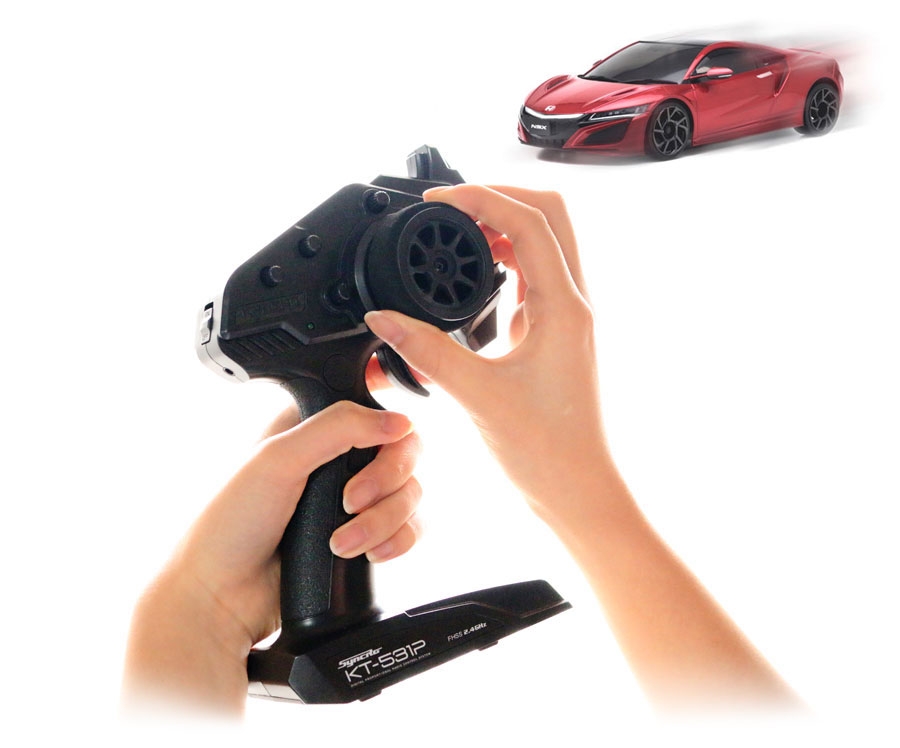
Mini-Z is great for driving at home, displaying as a collection, and modifying for improved performance.An indoor course designed with the included pylons is a great way to enjoy time trials.
Mini-Z can be driven immediately! Just insert four AAA-size alkaline batteries in the controller and four more in the chassis. Switch the controller ON, then switch the chassis power ON!
Controller --- AAA alkaline battery x 4
Mini-Z Chassis --- AAA alkaline battery x 4
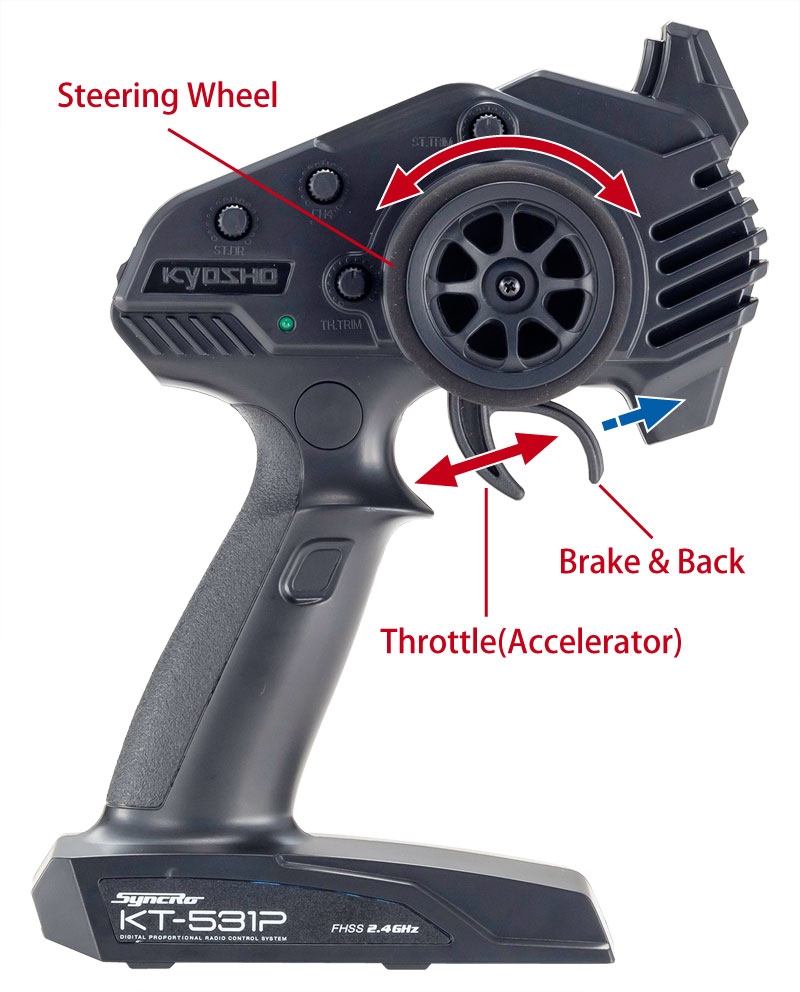
Hold the controller in your left hand and pull the throttle trigger slowly with your left index finger. This functions as the accelerator. Turn the steering wheel gently left and right using you right hand. Did you see the perfectly proportional movement of the wheels on the chassis?! This precise control demonstrates that the Mini-Z is a true hobby-grade RC car. The precision controls in addition to the high-quality construction, produce driving characteristics similar to that of a real car.
Learning how to control your Mini-Z is the key to proper driving. First, pull the throttle slowly and hold it at a slow speed while you gradually turn the steering wheel left and right. Start slowly and work up to a faster speed as you become more skilled.

Place two plastic bottles about 2 yards apart from each other. Try to drive around them in an oval pattern. This helps to better develop your driving skills in proximity to objects. You need to drive slowly at first, being careful to follow the same line around the oval. The better you get, the faster you can go!
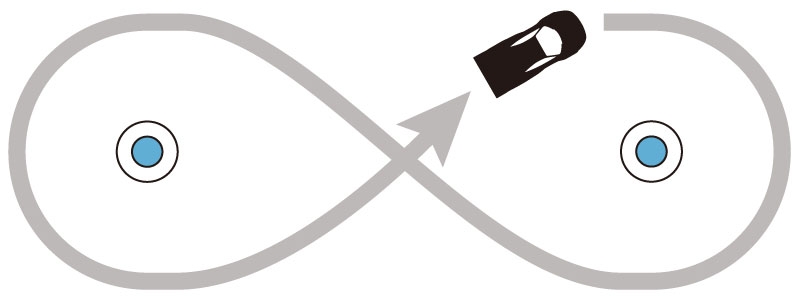
Next, try to drive your car in a figure 8 around the plastic bottles. If you can do this easily, you're ready for the next stage. There's a proper driving course layout available. Many drivers enjoy making their own more sophisticated layouts to even further develop their driving skills.



At just 7 inches in length, the Mini-Z only requires about 8x4 feet of space in your garage or living room. You don't need to go to a special race track. The AWD Sports is already fitted with special drifting tires, so all you need is to develop your drifting skills!
Maintain a steady, round circle as practice for controlled cornering while drifting. Place an object on the driving surface for reference. Start the drift with full steering to the right or left, then pull the throttle trigger to full throttle. Gradually return the steering to neutral and perhaps counter-steer. During this sequence, the car will begin to "drift." Adjust the throttle and steering to circle the reference object you place on the running surface, while the car's tires are spinning. At first, try a circle of about a couple feet, then gradually reduce the turning radius to run a tighter circle.

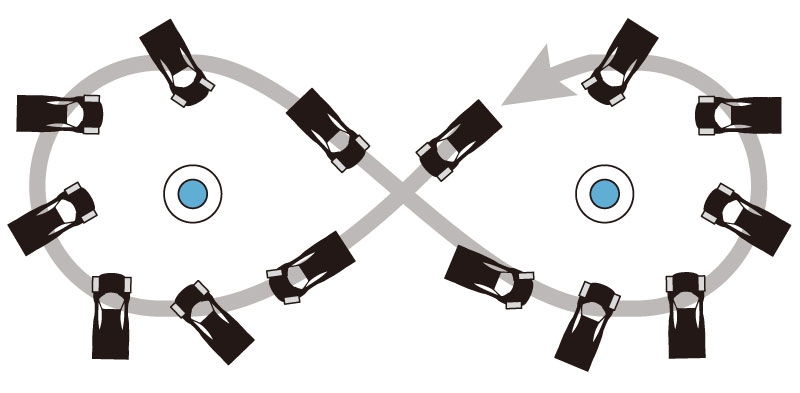
Practice a series of drift moves around a couple of plastic bottles. Place the bottles on the running surface about 6 ft. apart. Drive in a smooth figure 8 pattern to practice drifting. Once you have mastered the figure 8, then you can add more objects to increase the complexity of the course
Approach with a steady speed and practice the two following techniques.

Approaching the corner with a steady speed, quickly "flick" the steering to the left, then back to the right to initiate the drift. You'll have to counter-steer at some point to exit the corner in a straight line.

Approach the corner with a steady speed, then briefly let off the throttle, and then quickly apply full throttle as you steer into the corner to initiate the drift. Once sliding (oversteering), you may need to adjust the throttle and/or the steering angle to maintain a proper radius.

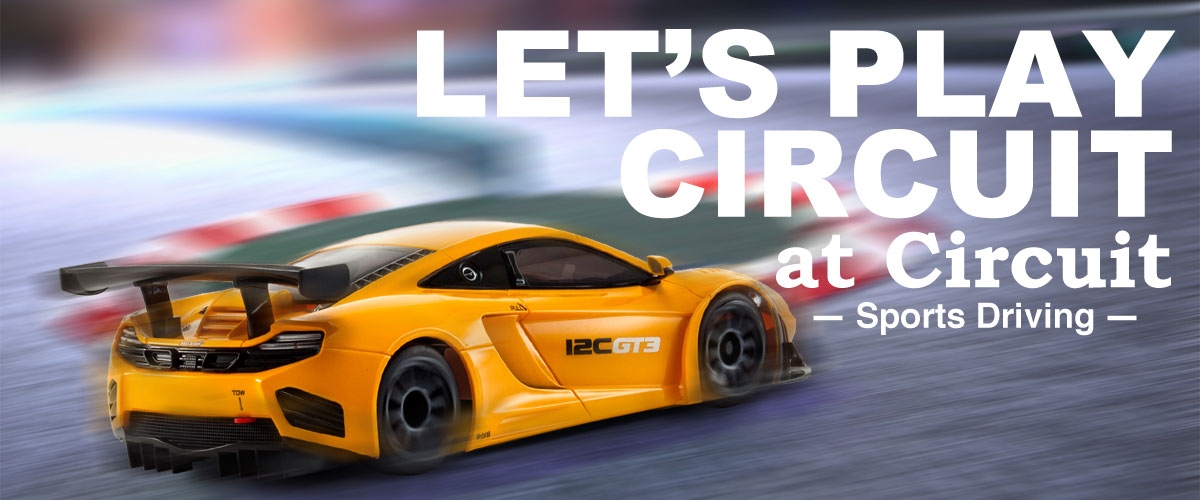
A Mini-Z racetrack is the optimum place to improve your driving technique. There are many hobby shops and clubs around the world that feature large, more complex circuits on which you and other participants can practice and race. Don't hesitate to visit one of these facilities in your area. The operators of these tracks are very accommodating to new drivers and will give you good advice on how to best practice to prepare for your first race. We've compiled some tips to get you started.
PHASE 1
Don't Start Driving Straight Away! Some preparation is needed first.
Accelerate along a straight line at full throttle and navigate through a number of corners. A race circuit is the place to enjoy real racing excitement. Race circuits offer a variety of layouts and surfaces and charge a fee for the time you use the circuit. These are places for everyone to go and enjoy racing so there are rules and regulations about usage that you should check on their websites beforehand.

Fill in the form at reception. Check the race circuit’s systems and conditions of use. Many race circuits display these conditions so please check.
Fees and rules are different for each race circuit, so check carefully.
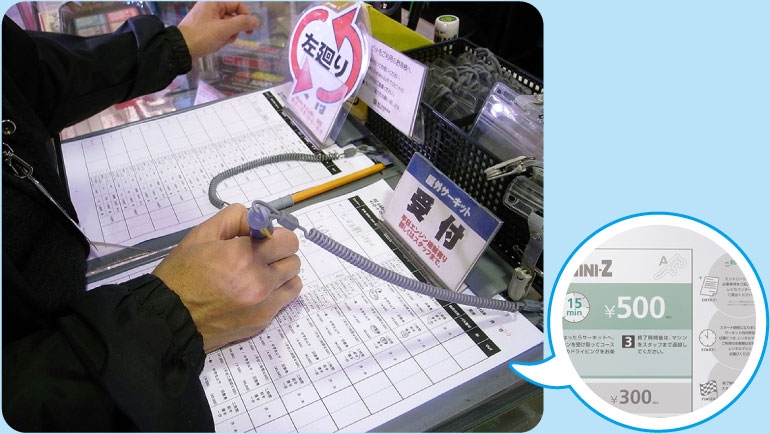
The Mini-Z uses 2.4GHz so frequency band control is easier these days. But when many users gather, interference may still happen. So switch OFF the controller when you are not using.
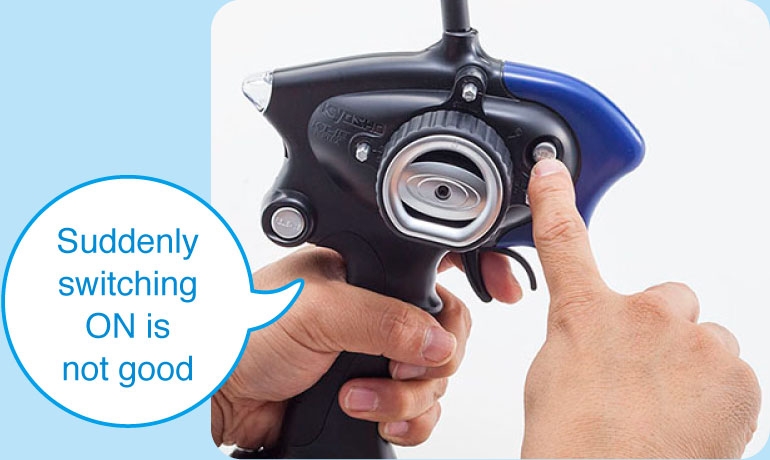
The pit is a place for checking and setting your machine. Everyone uses the pits so minimize the space used as much as possible. You should prepare consumable parts such as batteries and tires in case these wear out or break. If the race circuit shop stocks lots of parts, it can be helpful.

Before going to the circuit, check your machine and ensure there is no damage. Does the steering etc. move correctly? Then check the machine again at the pit as well to complete a full preparation.
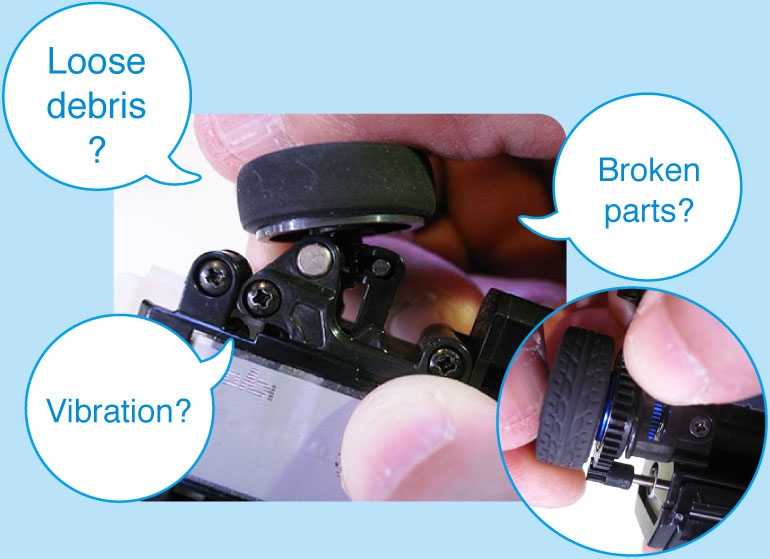
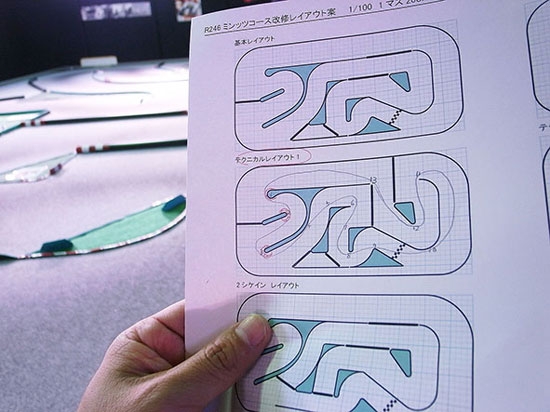
Mindlessly driving around the track won't help you to improve your skills. Determine the track layout that will be used at the facility you visit, then mentally prepare a plan to drive the most efficient lines around the track for the quickest, most consistent lap times.
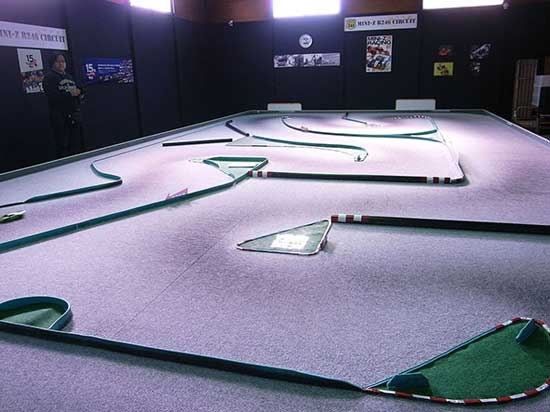
A course diagram provides an overview of the layout but seeing the circuit with your own eyes creates a totally different impression. First check the overall layout from a circuit diagram and then walk around the course to check specific points. You may find some gradient that doesn’t appear on the diagram or a shorter driving line though a corner.
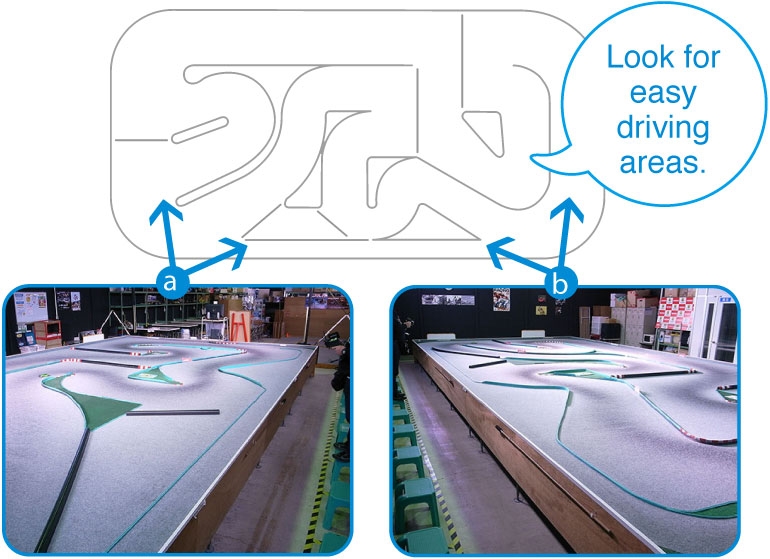
The position where you stand while driving your RC car is the driver's point of view. Note that the view of the circuit can be different depending where you stand with your the controller. Standing in the center usually provides the most complete view, but areas of the track may be obscured, or you may want a better view of a difficult section. Move around to find the optimal position from which you can drive most comfortably.
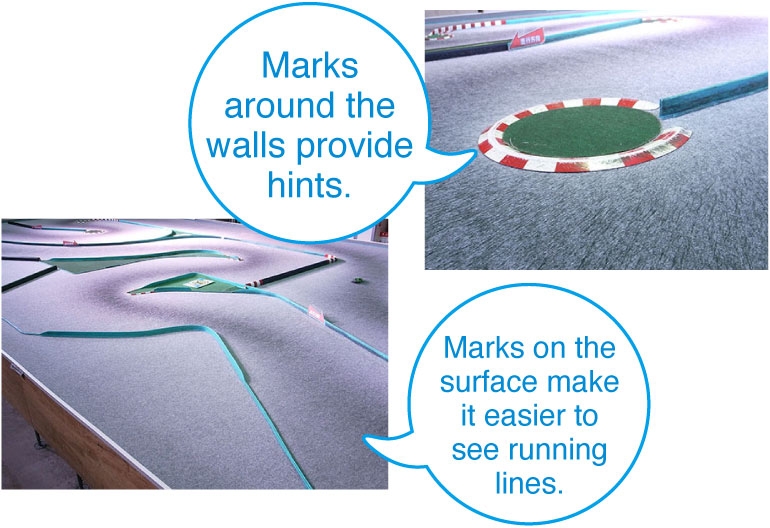
If relying 100% on sense, one mistake may disrupt your rhythm. So find markers around the course. Markers can be different with each circuit so identify things such as zebra zones, marks on walls, marks on the track surface and sign boards etc. Also, don’t just focus your view on the car as looking beyond each corner produces better driving results.
PHASE 2
Note the important driving points and adapt to the course. This is critical to driving faster!

Lets start driving. Avoid starting out too fast. The important thing is to precisely control the car. To practice, drive slowly down the middle of the course. This seems easy but it is actually quite difficult and you will discover the important interaction between steering and acceleration. If you maintain your driving line through the middle of the course, you can feel a natural driving rhythm.

Once you get the rhythm, try to drive the running lines that you envisioned while studying the track diagram. At this stage, do not get caught at each corner but breakdown the course into sections. You don’t need to drive fast, just learn to follow driving lines accurately and control the posture of the car when entering corners with a combination of steering and acceleration.


Once you get used to the course layout, plan the whole race. Think specifically where to accelerate and where to reduce speed, what posture provides the smoothest entry to corners without losing time etc. Don’t worry if you make a mistake, just focus on the cause and the solution. Was it the wrong speed or angle of attack, or something else? Think about it and try to find the best line for optimal speed. If you keep focus on these aspects you will find improvement in driving performance.


Enter the corner from the middle of the track, clipping the corner so that there is a straight line to corner 2.
Clear the corner with a tight inside line.
Use an outside line so the car is facing in a straight line towards corners 4 & 5.
Outside line on the track can be rough due to loose rubber tire material. Keep the car along a center line for a straight line through to corner 7.
Try to keep the line as straight as possible through 9 & 10. Keep the turn through corner 8 as tight as possible.
Don’t force the car along an inside line. Try to increase speed with a wider turn.
Clip the corner for an easy approach to corner 12.
Apply throttle quickly to accelerate straight towards corner 13. The starting position for acceleration is important.









